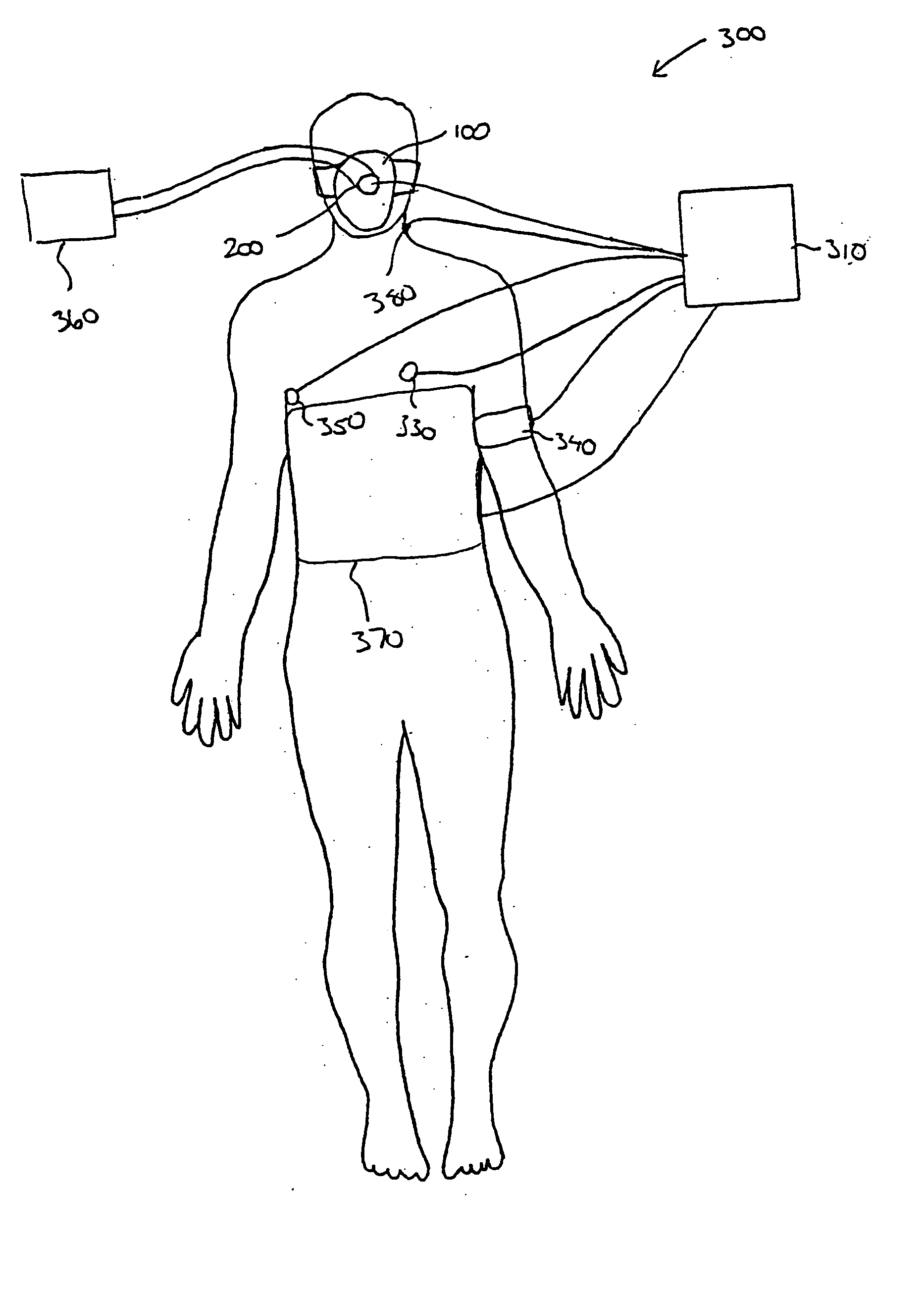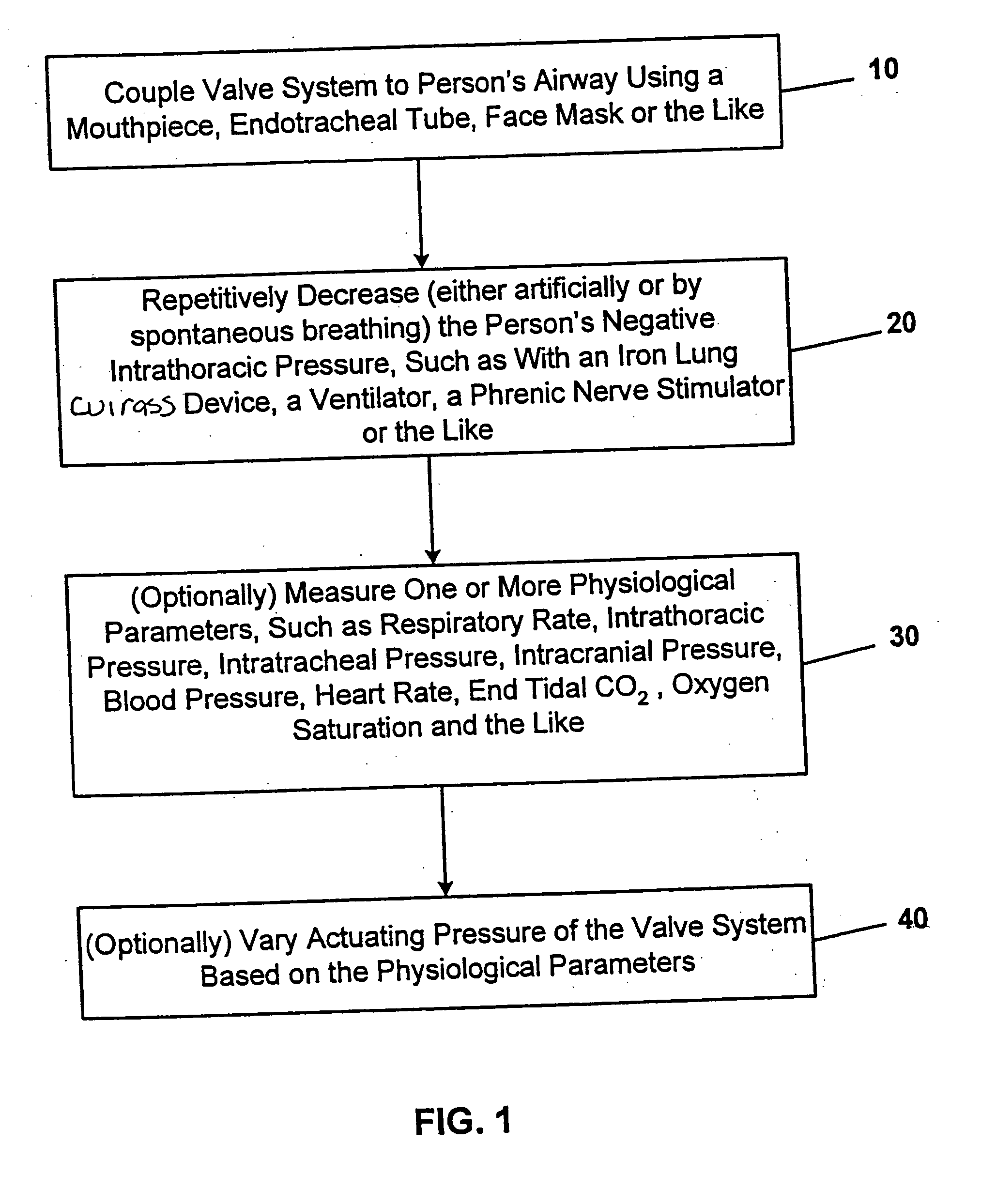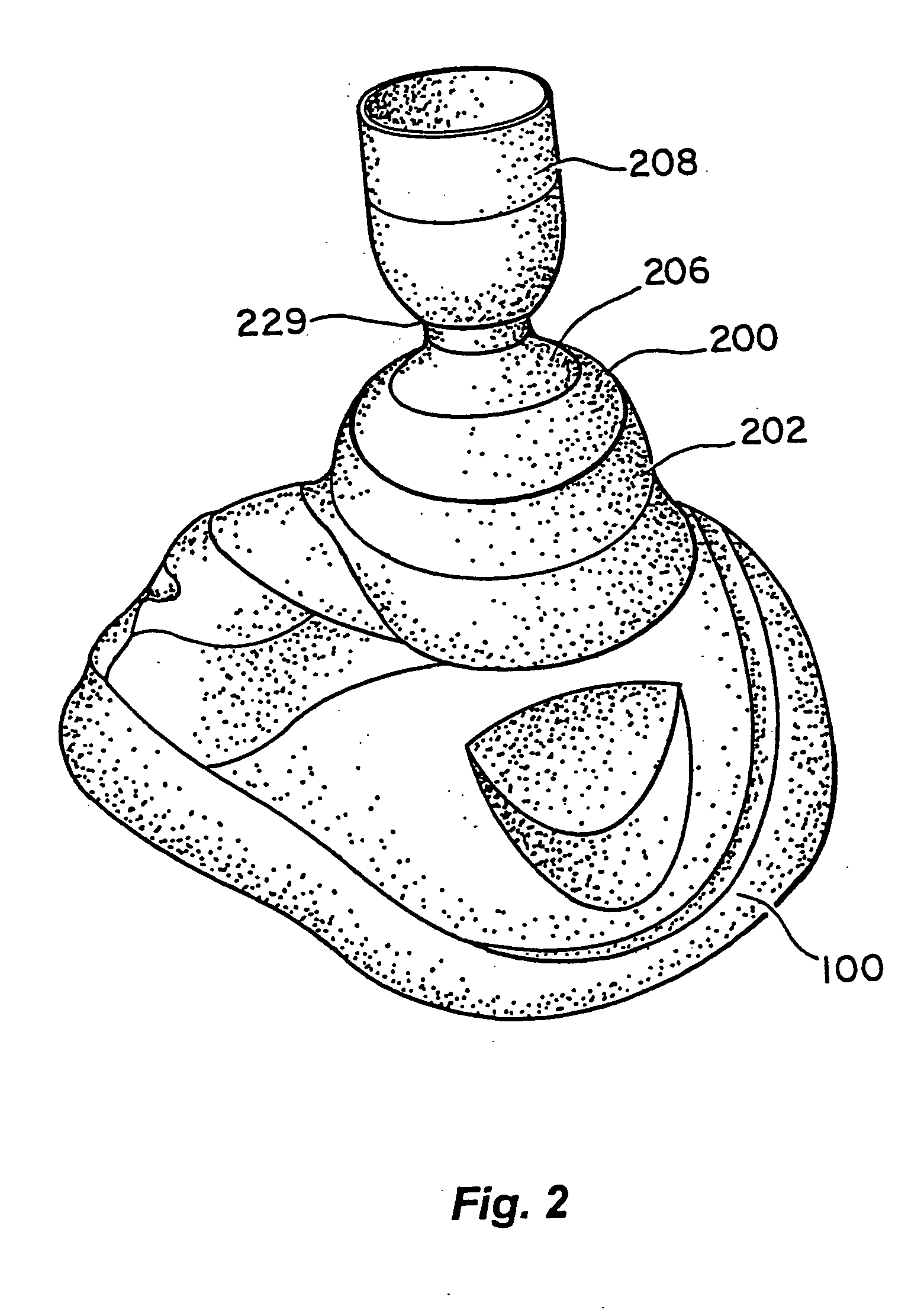Positive pressure systems and methods for increasing blood pressure and circulation
a technology of positive pressure and blood pressure, applied in the field of systemic, intracranial and intraocular pressure, can solve the problems of cell death, brain swelling, death or serious brain injury, etc., and achieve the effects of enhancing vital organ circulation, lowering intracranial pressure, and blackening blood flow
- Summary
- Abstract
- Description
- Claims
- Application Information
AI Technical Summary
Benefits of technology
Problems solved by technology
Method used
Image
Examples
example 1
[0067] The following is a non-limiting example illustrating how intracranial pressures may be lowered according to the invention. In this example, 30 kg pigs were anesthetized with propofol. Using a micromanometer-tipped electronic Millar catheter inserted below the dura, intracranial pressures were measured continuously in the spontaneously breathing pigs. Intrathoracic pressures (ITP) were recorded using a Millar catheter placed in the trachea at the level of the carina. After stabilizing the pigs blood pressure, heart rate, and ventilation rate, intracranial pressures (ICP) and intrathoracic pressures were recorded, with 0 cmH2O inspiratory impedance and then with inspiratory impedances of 5, 10, 15, and 20 cm H2O. Inspiratory impedance was achieved using an impedance threshold valve (ITV) as described in FIGS. 2-5.
[0068] At base, the intracranial pressure was approximately 8 / 4 mmHg. With increasing amounts of inspiratory impedance, the intracranial pressure was lowered proporti...
example 2
[0069] In this example, intracranial pressures were increased in the setting of recovery from cardiac arrest. The example used a pig model with ventricular fibrillation for 6 minutes followed by cardiopulmonary resuscitation for 6 minutes, followed by defibrillation. Spontaneous breathing resulted in an up to 50% decrease in intracranial pressures when the animals breathed through an inspiratory impedance of 10 cm H2O using a valve system similar to Example 1.
[0070] In all examples above, the intrathoracic pressure decreased relative to the rest of the body, creating a suction effect that reduced the pressure in the venous blood vessels draining the brain, thereby reducing intracranial pressures.
[0071] The invention further provides techniques and devices for reducing intracranial pressure (ICP) by facilitating movement of cerebral spinal fluid (CFS). There are a number of causes of increased ICP including: head injury, ischemia, osmolar imbalance, cerebral edema, tumors, complica...
example 3
[0097] Example 3 is another non-limiting example illustrating how intracranial pressures and intrathoracic pressures may be lowered and systolic arterial pressure may be increased according to one aspect of the invention. In this example, 30 kg pigs were anesthetized with propofol. Using a micromanometer-tipped electronic Millar catheter inserted 2 cm below the dura, intracranial pressures were measured in non-breathing pigs. Intrathoracic pressures (ITP) were recorded using a Millar catheter placed in the trachea at the level of the carina. Systolic aortic blood pressures (SBP) were measured in the aorta with a Millar catheter. To regulate intrathoracic pressures, a system similar to that illustrated in FIGS. 14A, 14B, 15A and 15B was used, with inspiratory impedance (−8 cm H2O with a flow rate of 30 L / min). Positive pressure ventilation was provided at a rate of 10 breaths / min with a tidal volume of approximately 400 ml delivered over 1.0 seconds with an automatic transport ventil...
PUM
 Login to View More
Login to View More Abstract
Description
Claims
Application Information
 Login to View More
Login to View More - R&D
- Intellectual Property
- Life Sciences
- Materials
- Tech Scout
- Unparalleled Data Quality
- Higher Quality Content
- 60% Fewer Hallucinations
Browse by: Latest US Patents, China's latest patents, Technical Efficacy Thesaurus, Application Domain, Technology Topic, Popular Technical Reports.
© 2025 PatSnap. All rights reserved.Legal|Privacy policy|Modern Slavery Act Transparency Statement|Sitemap|About US| Contact US: help@patsnap.com



